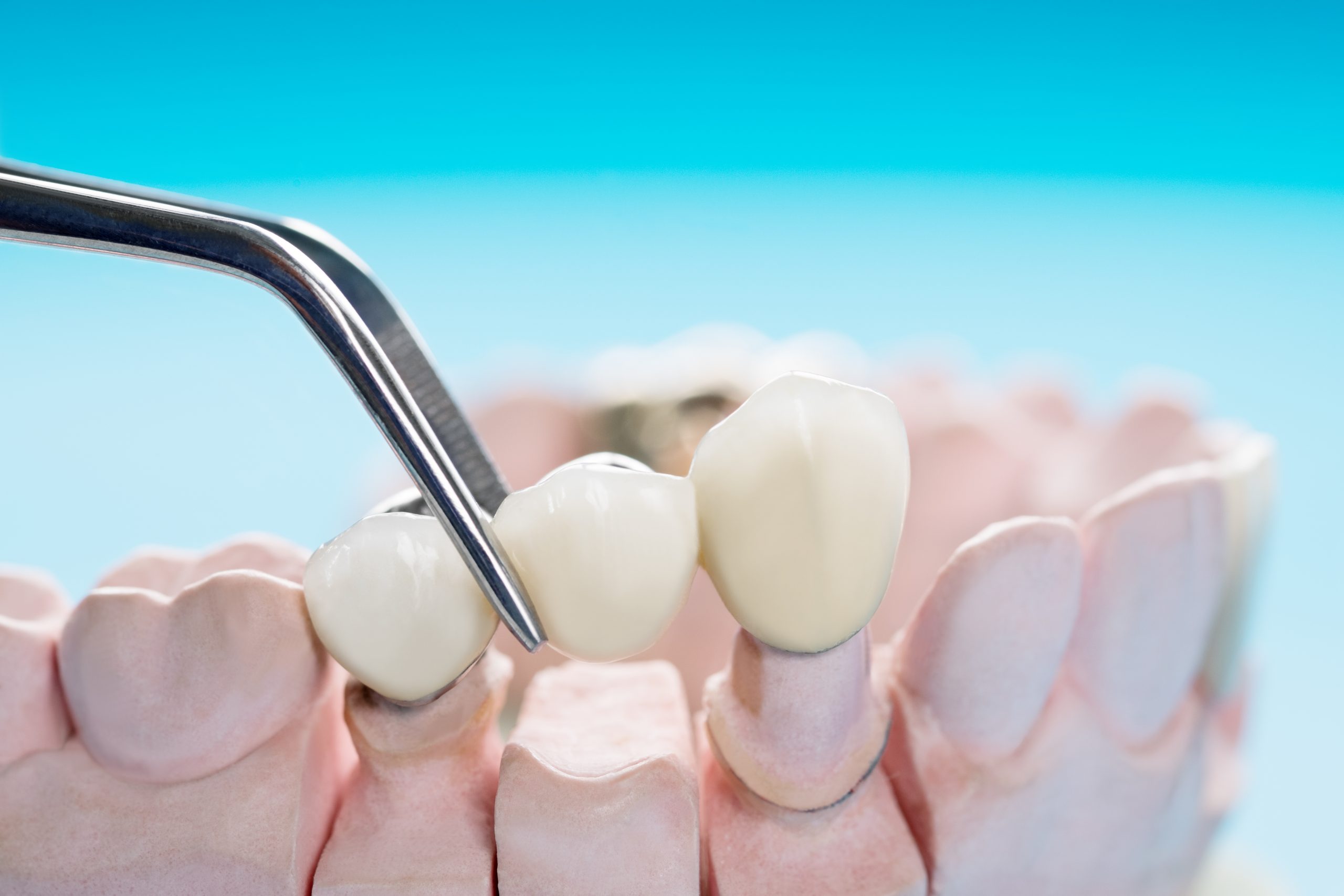Are you missing a tooth? A dental bridge is a reliable and appealing way to “bridge the gap.” This guide walks you through everything, from what a dental bridge is to the types of dental bridges, the duration of the restoration, and recovery. You’ll also learn how a bridge for teeth compares to implants and what results you can expect before and after treatment. Whether you’re considering a front teeth bridge or replacing multiple teeth, this guide will help you make an informed decision.
What Is a Dental Bridge?
A fixed prosthetic tool used to replace one or more lost teeth is called a dental bridge. It uses pontics (artificial teeth) anchored to adjacent natural teeth (abutments), restoring your smile and bite, from front teeth bridge options to bridging tooth solutions in the back.
What Does a Dental Bridge Look Like?
Visually, a dental bridge closely resembles your natural teeth. The artificial teeth, known as pontics, are made to precisely match the size, shape, and color of your natural teeth to cover the space left by missing teeth. This results in a smooth, lifelike smile that blends in perfectly with your real teeth. The bridge is anchored to the adjacent natural teeth or dental implants, providing stability and function. Overall, it restores both the appearance and chewing ability, helping maintain your oral health.
Types of Dental Bridges
Choosing the right style is key. Let’s explore:
- Traditional Bridge: The most common kind of bridge features crowns on either side and pontics in the middle.
- Cantilever Bridge: When space is limited, a cantilever bridge is perfect because only one side requires a crown.
- Maryland (Resin-Bonded) Bridge: A temporary dental bridge is often used for a front teeth bridge due to minimal prep and resin wings.
- Implant-Supported Bridge: This type of bridge offers the best combination of strength and permanence by attaching to dental implants.
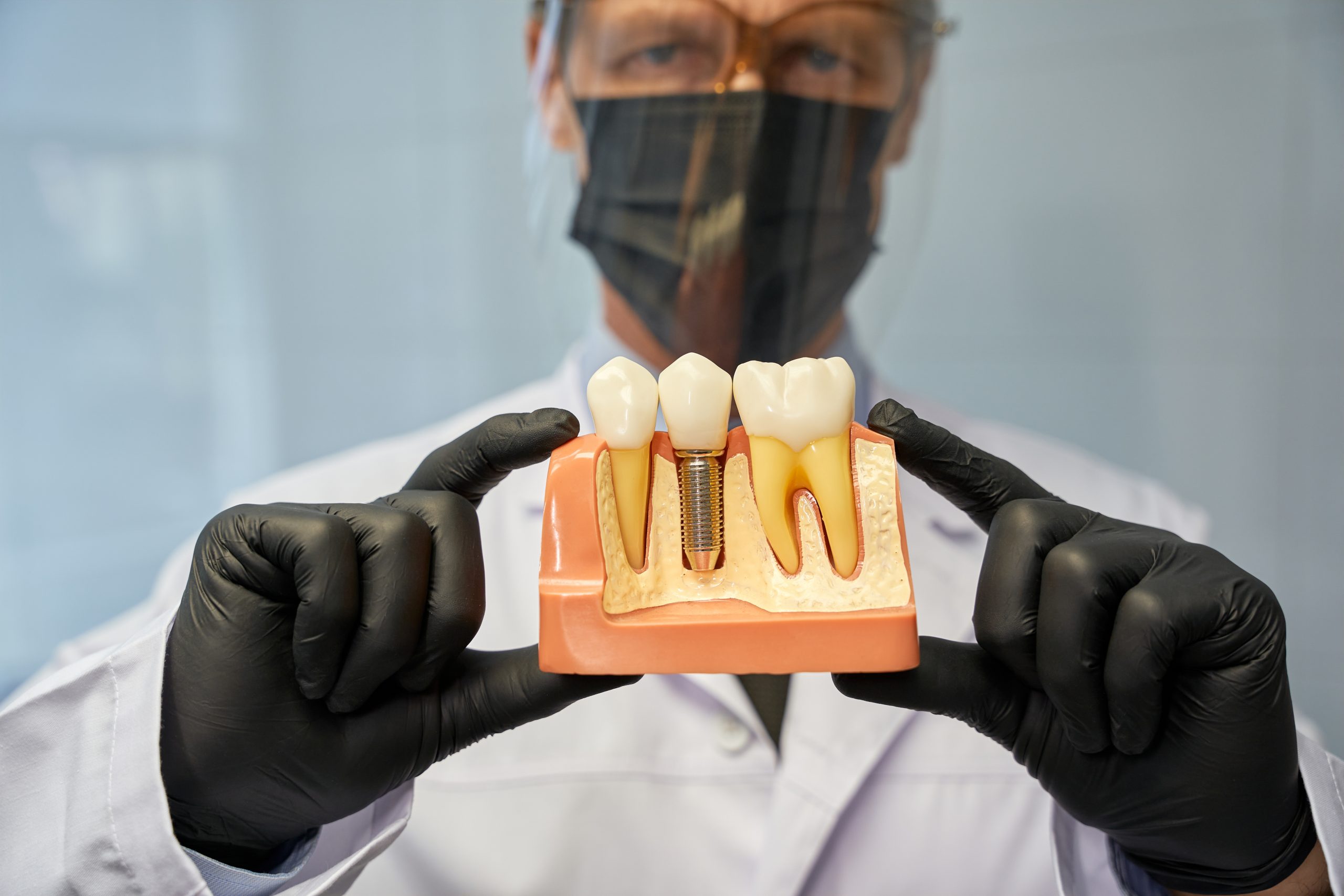
Dental Bridge Procedure: Step by Step
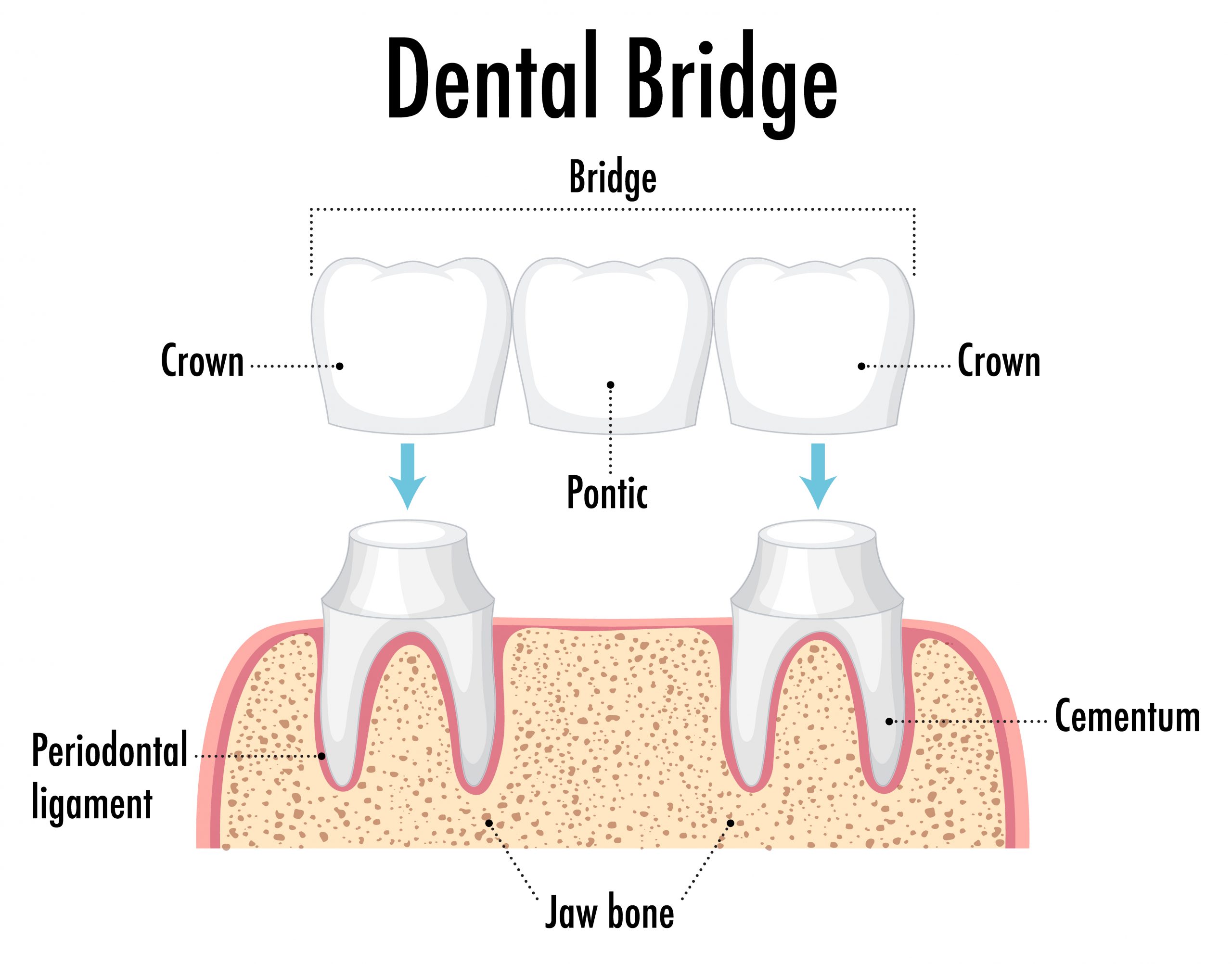
Preparation & Impressions
Your dentist will prepare the abutment teeth, shaping them to fit as dental crowns. This ensures a snug, stable fit for your bridging tooth. An impression or digital scan is taken to fabricate your custom bridge.
Temporary Dental Bridge
You’ll receive a temporary dental bridge to protect exposed teeth and maintain aesthetics while your permanent bridge is being crafted.
Permanent Fitting
The permanent bridge is tested and fixed into position at your follow-up. Your dentist checks your bite and fits, making fine adjustments.
Difference between bridges and implants
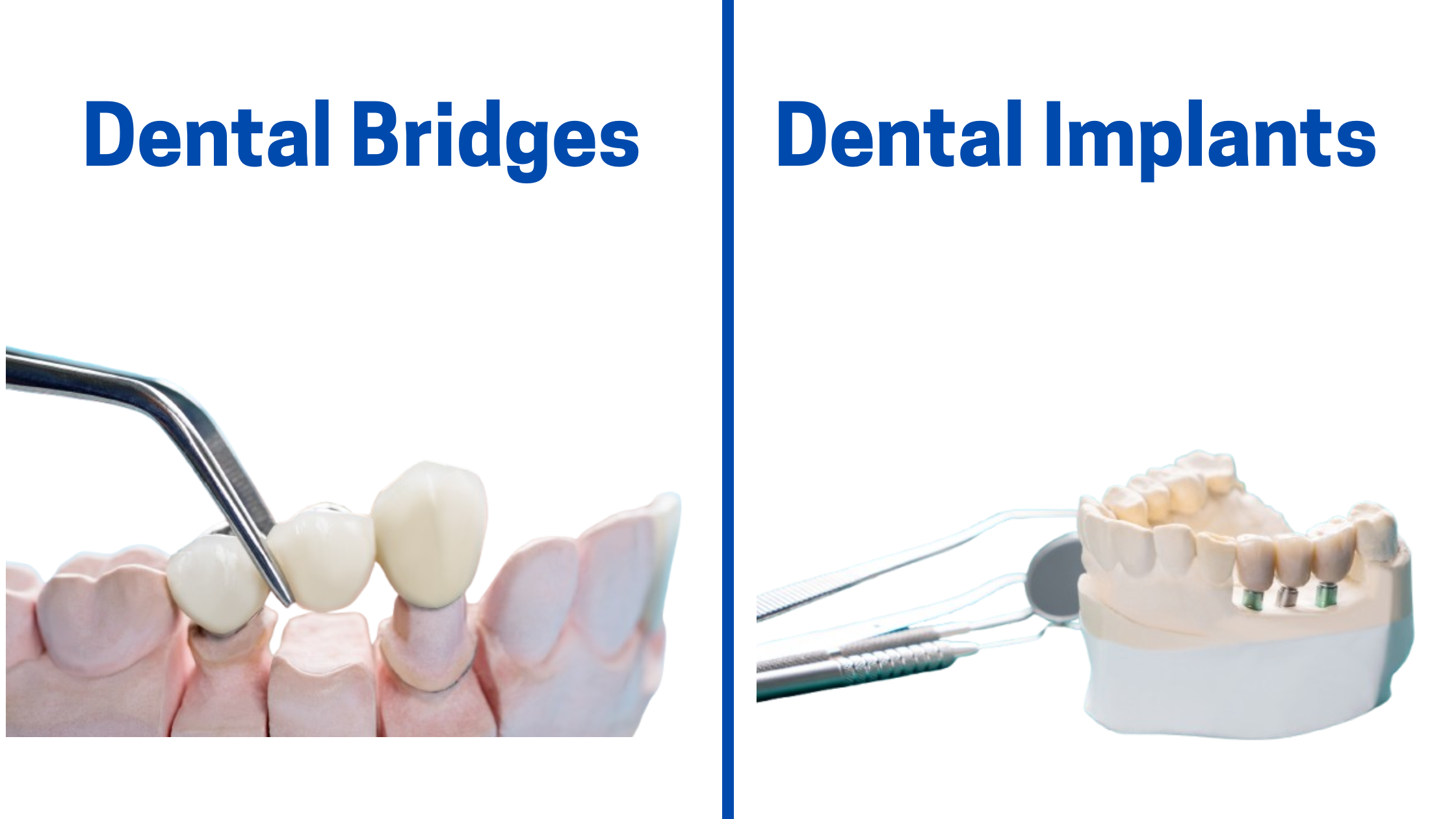
When it comes to replacing missing teeth, patients often find themselves deciding between two popular options: dental bridges and dental implants. While both are effective at restoring function and appearance, they differ in procedure, durability, cost, and how they affect surrounding teeth and bone.
A dental bridge involves placing crowns on the teeth adjacent to the gap and suspending an artificial tooth (called a pontic) between them. It’s a quicker and less invasive process compared to implants, making it an appealing choice for those who want faster results or may not be suitable candidates for surgery. However, it requires filing down healthy neighboring teeth to support the bridge, which can impact long-term tooth health.
A dental implant, on the other hand, is a surgical procedure in which a titanium post is inserted into the mandible to serve as the replacement tooth’s root. After healing and integration with the bone, a crown is attached, offering a highly durable and natural-feeling solution. Implants preserve jawbone structure and don’t rely on neighboring teeth, which helps maintain overall dental health.
Here’s a quick breakdown of the key differences:
Table
Ultimately, the decision between a dental bridge vs an implant depends on your oral health, jawbone condition, budget, and personal preferences. At Kathy Jacobsen Contemporary Dentistry, we guide you through both options to find the best solution tailored to your needs and smile goals.
Is a Dental Bridge Permanent?
Yes and no. The decision will be based on your timeline, budget, bone density, and oral health. However, it’s not lifelong. With the right care, your bridge may last from five to fifteen years, and in many cases, even beyond that.
How Long Does a Dental Bridge Last?
On average, expect 5–15 years of service. With excellent oral care and regular dental visits, it could last over a decade.
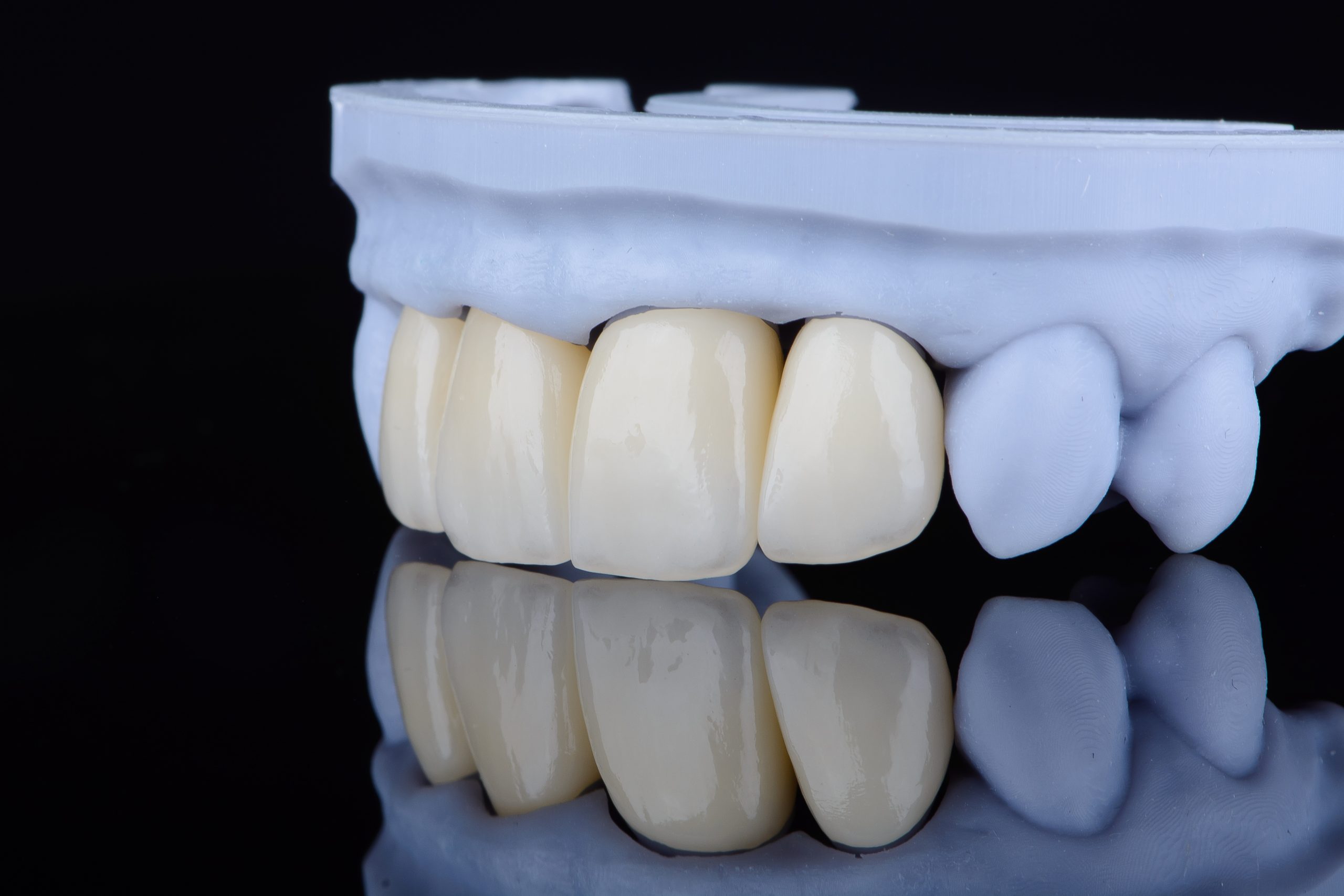
Dental Bridge Before and After Transformation
- Before: Gaps from missing teeth impact speech and confidence.
- After: A seamless smile with restored function and aesthetics, a bridge for teeth truly bridges more than just gaps.
Recovery After the Dental Bridge Procedure
Most patients recover in 1–2 weeks as their gums adjust. Expect mild soreness or sensitivity, over-the-counter pain relief, and soft foods to help. Avoid hard or chewy foods initially.
Caring for Your Dental Bridge
To extend its life:
- Brush twice daily with fluoride toothpaste.
- Floss around abutments and under pontics (use floss threaders or interdental brushes).
- Steer clear of hard foods and habits like chewing ice or pens.
- See your dentist regularly for check-ups and cleanings.
Temporary vs Removable Dental Bridge
- Temporary dental bridge: A short-term solution until your permanent one is ready.
- Removable dental bridge: Also referred to as a removable partial denture, a removable dental bridge may be removed for cleaning. Unlike a fixed bridge, it’s less stable and only an interim option.
Front Teeth Bridge: Special Considerations
Replacing front teeth with a dental bridge requires special attention, especially when it comes to appearance. The bridge needs to blend in perfectly with your natural smile because the front teeth are so noticeable. A Maryland bridge is often a preferred option in these cases because it requires minimal preparation of the surrounding teeth and provides a more conservative, natural-looking result.
To achieve the most aesthetic outcome, your dentist will carefully match the color, shape, and size of the replacement tooth to your existing teeth. This helps ensure the bridge looks as realistic and natural as possible. Precision and customization are key to restoring both function and a confident smile.
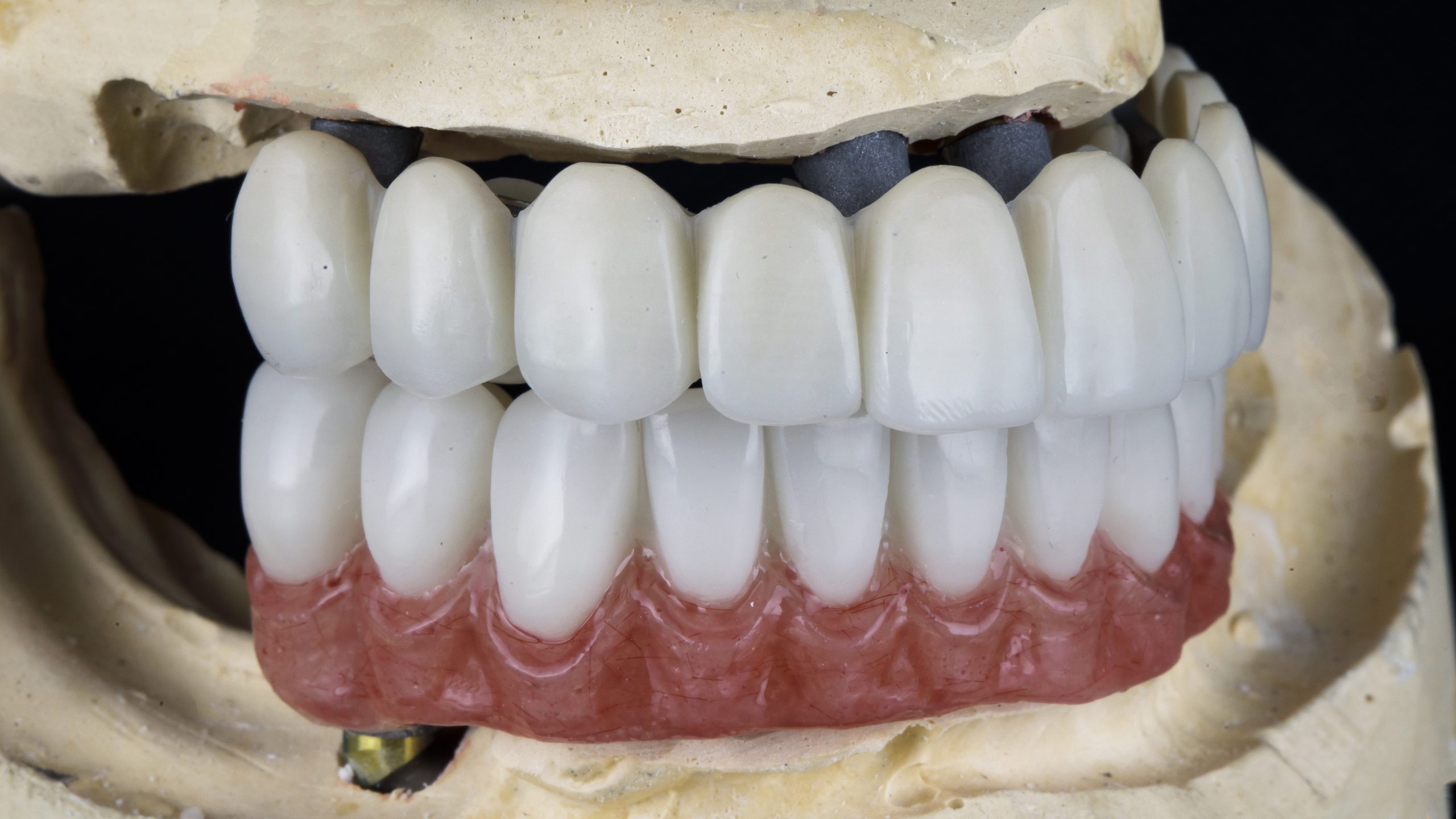
Bridging Tooth Pain & Risks
Dental bridges are typically comfortable once you’ve healed, but there are a few risks to keep in mind:
- Tooth decay can develop in the supporting (abutment) teeth if the bridge doesn’t fit properly or if oral hygiene is poor.
- Damage or wear may occur from chewing hard or sticky foods, potentially affecting the bridge or surrounding teeth.
- Gum inflammation is possible if you don’t clean around the bridge thoroughly, as trapped food and plaque can lead to irritation or infection.
Maintaining good oral hygiene and avoiding harmful habits can help reduce these risks and keep your bridge in good shape.
Choosing: Dental Bridge vs Implant
Ask yourself:
- Want quick, affordable results? → Bridge for teeth.
- Prefer a long-term, bone-preserving, standalone solution? → Consider implants.
The decision will be based on your timeline, budget, bone density, and oral health.
Ready to Transform Your Smile?
At Kathy Jacobsen Contemporary Dentistry, our skilled team offers every type of dental bridge procedure, all tailored to your needs, whether it’s a front tooth bridge or a multi-tooth solution. Book your consultation today to discover the best way to fill your gap and reclaim your smile.
Frequently Asked Questions
How long does installation take?
Usually, two visits over a few weeks; implant-supported bridges take longer due to healing.
Can I remove my bridge?
No, except if it’s a removable temporary partial denture. Fixed bridges are cemented.
Can I replace a failed bridge?
Absolutely, bridges are replaced when damaged or aged. Typically every 10–15 years.



